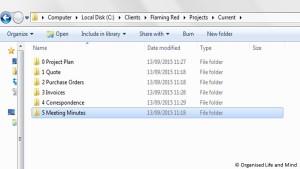Part 3: Follow up after the meeting
Welcome back to the third and final part of the mini-series on running effective meetings. I’m sure by now, you’ve been in a number of meetings and I do hope you could apply some tricks from the first 2 posts. Today, let’s look into the follow up of a meeting.
Type up the minutes of the meeting and distribute them as soon as possible. Ideally, block the next 30 minutes after the meeting to write them. Doing this shortly after the actual meeting allows you to remember as much as possible and to build on the momentum of the meeting.
File the meeting notes in a folder where everyone can easily access them. This may be on a shared drive in a specific meeting folder or on the intranet. If you’re dealing with external clients, make use of shared space on the cloud.
Communicate the actions and tasks to their owners. Don’t forget to include the deadlines and write the actions in a SMART way. Just like your SMART goals, SMART actions are more likely to be completed.
Set expectations for these actions. As HBR states, “make clear that you expect each commitment will be fulfilled as agreed upon.” This ties nicely back to the SMART actions and tasks.
Track these actions and follow up if not completed by the deadline. Some team members may need support prioritising these tasks. If you are their manager or see them struggling, reach out to them. If this is becoming a regular occurrence, you may want to look into their learning and development opportunities.
Send out any updates prior to the next meeting. Give participants at least 3 hours or better a day. Anything send out 5 minutes before the meeting will not be read.
I hope you’ve enjoyed this mini-series and have gained some valuable new insights making your meetings more productive and efficient. What tips do you have to add to this mini-series which have helped you with your meetings? I’d love to hear from you. Leave a comment below!
Until next time,
Agni
